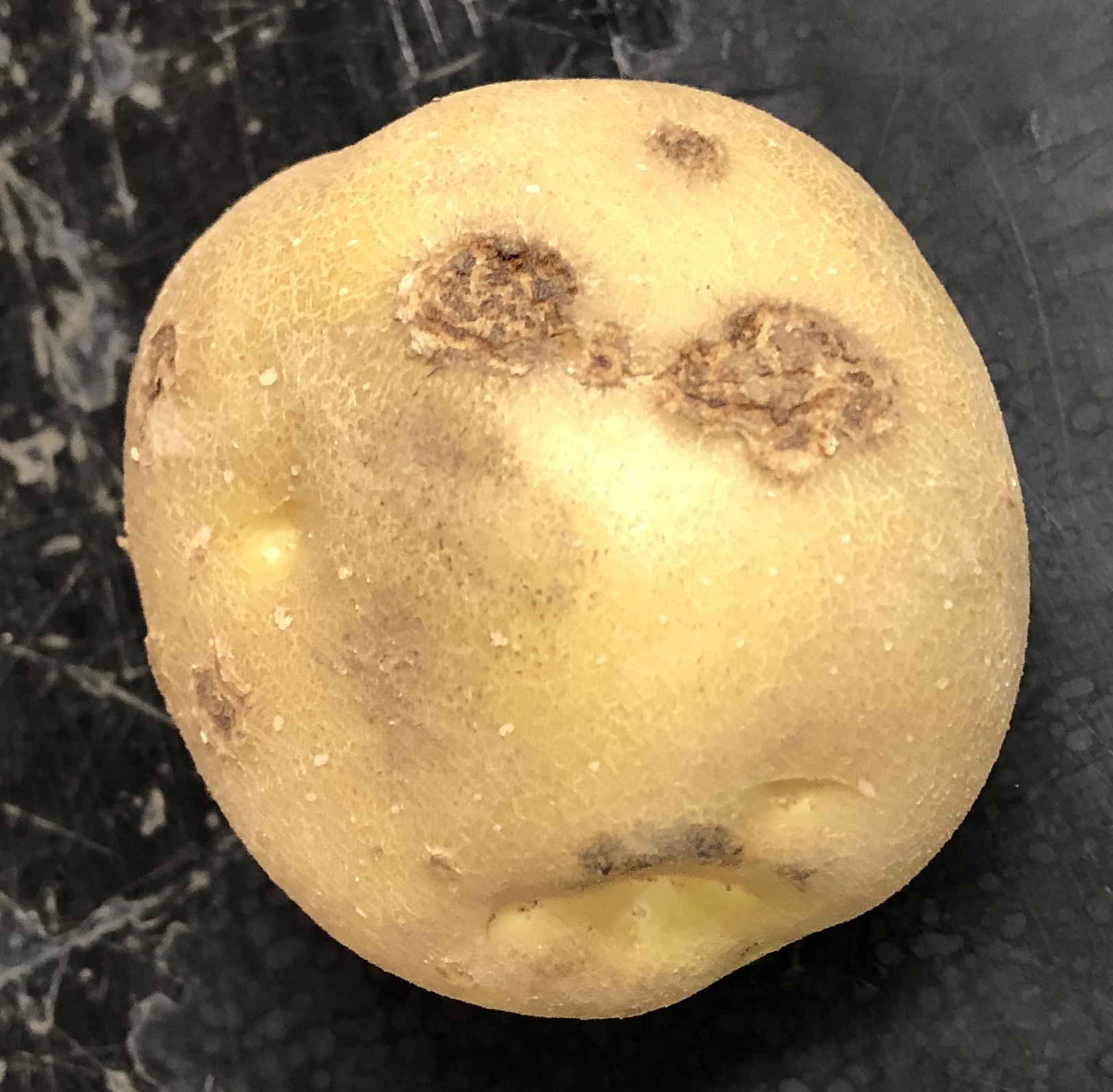
Common scab
Streptomyces spp.
What is a Common scab (Streptomyces spp.)?
Common scab is a bacterial disease caused by Streptomyces spp., It affects underground crops, primarily potatoes, in potato-growing regions worldwide. Infected plants develop circular lesions on tubers, ranging from small spots to larger patches. Lesions are raised at the edges and slightly depressed in the center. Different forms include russet scab (tan to brown corky lesions), pitted scab (depressions beneath the tuber surface), and raised scab (warty lesions). The disease can be mistaken for powdery scab and patchy russeting. Streptomyces spp. can also cause brown stem and stolon lesions.
How does Common scab (Streptomyces spp.) occur?
Common scab is spread by Streptomyces spp. bacteria, which survive in soil and infected seed tubers. Spores persist in soil and organic matter, germinating under favorable conditions to infect developing potato tubers. The bacteria colonize tuber surfaces and produce scab-inducing metabolites like thaxtomin. Infected tubers serve as a source of inoculum, spreading the disease to new plants. Proper composting can eliminate infective Streptomyces spp., while warm dry soils favor infection.
Symptoms
1 - Impacts on Plants
Common scab causes scaly lesions on tubers, reducing their market value. Severe infections lead to rejected tubers, affecting farmers' profitability and causing economic losses.
2 - Soil Health and Environment
• Streptomyces spp. can persist in soil, particularly in the presence of decaying organic matter, acting as a potential source of infection for future crops. • Intense scab infections can accumulate scabby tubers in the soil, potentially reducing its quality and nutrient availability.
Solutions
1 - Cultural and Agronomic Practices
• Rotate crop with non-host crops to break the disease cycle and reduce inoculum buildup in the soil. • Use certified seed tubers free from common scab to minimize introducing the pathogen into the field. • Maintain optimal soil moisture levels during tuber initiation and growth stages to reduce scab severity. • Avoid excessive nitrogen fertilization, as it can promote scab development. • Properly dispose of infected tubers to prevent disease spread.
2 - Soil Management
• Maintain soil pH above 5.5, as lower pH inhibits scab development. Note that S. acidiscabes can cause scab in acidic soils. • Avoid excessive accumulation of decaying organic matter in the soil, as it can harbor Streptomyces spp.
3 - Biological and Chemical Control
• It is recommended to consult with local agricultural experts or extension services to identify and select the most suitable biocontrol agents for common scab management in your region. • Consult local experts for recommended Chemical products and guidelines. • Integrated Pest Management: Implement an integrated approach combining cultural, biological, and chemical control methods based on local recommendations.
